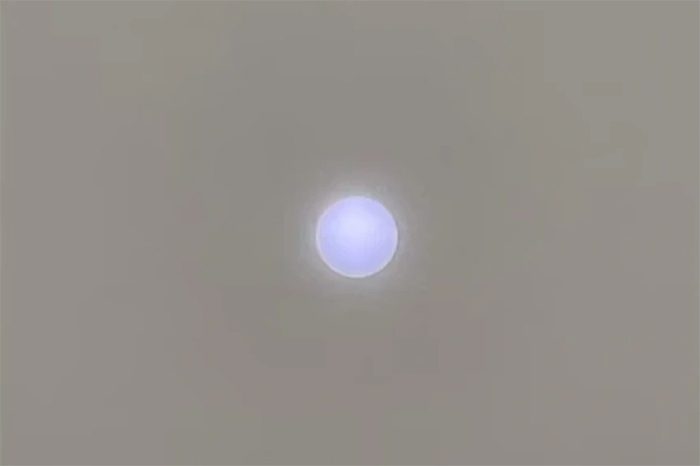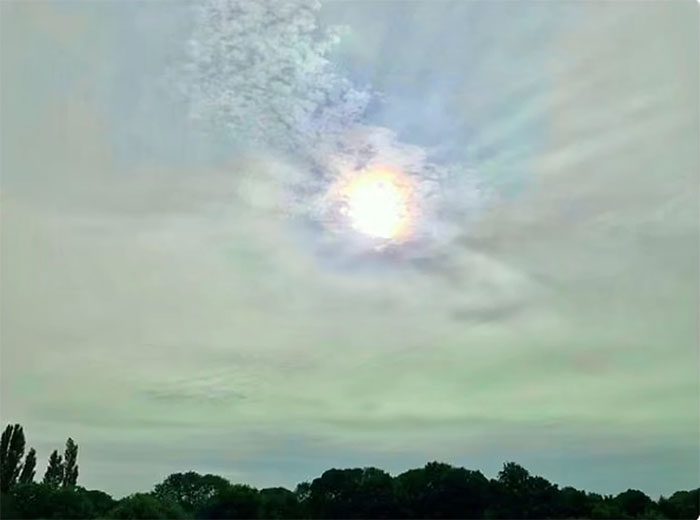Skywatchers across England were shocked to see the Sun suddenly turn blue on the last day of September.
Images of this strange phenomenon flooded social media, particularly Twitter, accompanied by many bewildered posts. “Oh my God, I’ve never seen a blue Sun before,” one comment read.
Fortunately, this unusual hue of the Sun is not a cause for concern. Scientists quickly clarified the situation by providing a simple explanation.
According to Dan Harris, Deputy Director of Weather Forecasting at the Met Office, the western regions of England are currently affected by smoke from wildfires in Canada. “The combination of smoke and high-altitude clouds has scattered sunlight, creating this unusual color change,” Harris explained.

The Sun turns blue on September 30 in some areas of England. (Photo: Chris Page).

The unusual color of the Sun comes from light scattering due to dust and smoke in the atmosphere. (Photo: Ruth Wadey).
NASA also provided a similar explanation, suggesting that the Sun’s unusual color is due to light scattering that extends from North America across the Atlantic, influenced by wildfires and Hurricane Agnes.
As sunlight travels toward Earth, it naturally scatters through particles in the atmosphere, such as dust and smoke.
In this case, the shorter the wavelength, the more easily the light is scattered. Violet has the shortest wavelength at about 380 nanometers, while red has the longest at about 700 nanometers.
The observable color of the sky corresponds to a mix of monochromatic blue light (at wavelengths 474-476 nm) mixed with white light, which means it is unsaturated blue light. This explains why the sky appears blue.
So, what is the true color of the Sun?
Children, and even adults, often depict the Sun as yellow or orange. However, experts argue that this is not the Sun’s actual color. In reality, the color of a star depends on its surface temperature and the wavelengths of light that the human eye can perceive.
According to Science Times, the Sun emits light across the entire spectrum of wavelengths, covering all regions of the electromagnetic spectrum except gamma rays. At peak spectrum, the Sun at its highest wavelength is described as having a greenish color.
However, within the narrow range of visible light, the amount of light emitted at each wavelength is nearly identical. The human eye does not perceive light by averaging the different colors of the spectrum. Thus, a small amount of green light appears white to the human eye.
But if the true color of the Sun is white, why does it often appear yellow when observed from Earth?
This is due to the Earth’s atmosphere scattering blue light more effectively than red light. The slight deficiency of blue light is what leads the human eye to perceive the Sun as yellow.


















































